A pleated skirt (pleated or goffered) is a universal model of women's wardrobe, which can be combined with different styles of clothing. The pleats made on the model can have different shapes and directions and help to hide various flaws of the female figure.
A woman can make such a product herself without using a pattern, but after carefully calculating the size of the folds, choosing the decor option, length and style.
Types of folds
A pleated skirt (the pattern for the item is given below in the article) is an ultra-modern model of women's wardrobe. The pleats on the model are a variation of darts, allowing you to hide pronounced figure defects, create an expansion at the hips, while narrowing the waist area.
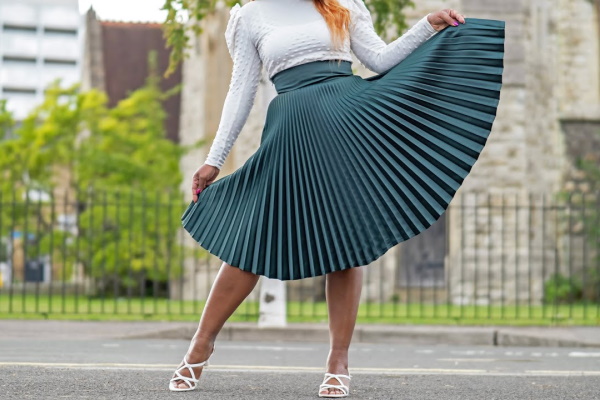
Types of folds:
| Type of folds | Their characteristics |
| One-sided | They have opposite directions and are evenly distributed on both sides of the product. |
| Bow | They diverge in different directions along the entire length of the skirt. Depending on the type of model, the number of fabric tucks can vary, ranging from 2-3 to 25 folds. |
| Oncoming | They are considered to be similar to bow folds, but are made strictly towards the center of the product. The exception to this rule will be central folds, placed in the middle of the model. |
| Circular | They are located at the waist and directed in one direction. They are distinguished by their complex execution, requiring precise calculation of the folds in quantity and depth. |
| Fan-shaped | They are characterized by a specific divergence strictly from one center. |
| Asymmetrical | This type of pleat design is used in the production of women's business suits and is represented by 2-4 one-sided tucks on the fabric. |
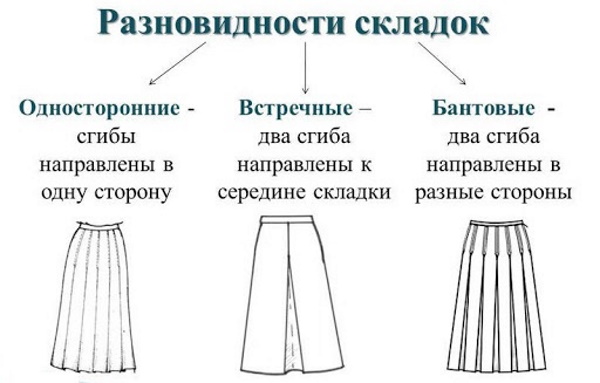
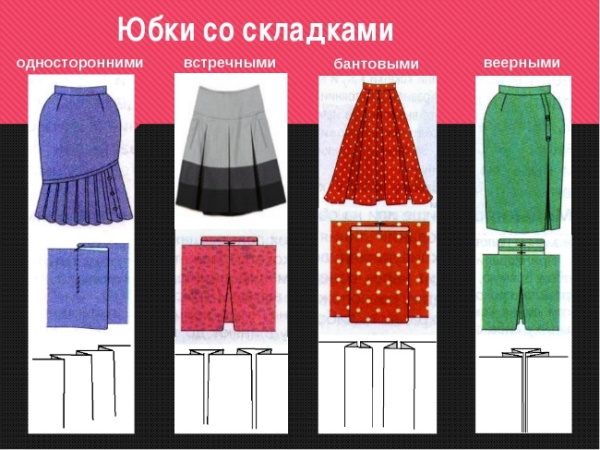
According to the manufacturing method, experts divide folds into:
- Stable - connected by a hidden seam running along the inside of the product.
- Superscript – in which the connecting seam can perform a decorative function.
- Connecting – requiring hidden connection of tucks (in most cases on the reverse side).
How to choose a material
A pleated skirt at the waist (the pattern for the item must be made independently) can have any style and is made from light flowing or dense material.
Made from satin, chiffon or organza, the model can be either a solid color or decorated with a variety of prints.
The folds formed along the entire perimeter of the garment are secured at the waist with a belt, fall in light folds and at the same time give the model a certain splendor. The bottom line can be distorted here, and to give the garment a clear style, it is necessary to secure the folds at a certain level.
A tartan skirt made from thick material requires:
- Form the folds so that their inner part is located along the inner side of the model and secure them with a continuous stitch that does not disturb the color structure of the fabric.
- Select the depth of the pinch so that it corresponds to the size of the material's decor, which will prevent the original pattern from being damaged on the finished product.
- Maintain equality between the exact number of finished folds and the waist circumference value.
Box, counter and circular tucks can decorate a skirt of any length, but when creating an everyday look, stylists advise making midi models, which will make it easy to combine them with a variety of tops.
Materials for sewing a skirt
A pleated skirt at the waist is made using:
- main fabric;
- dublerin;
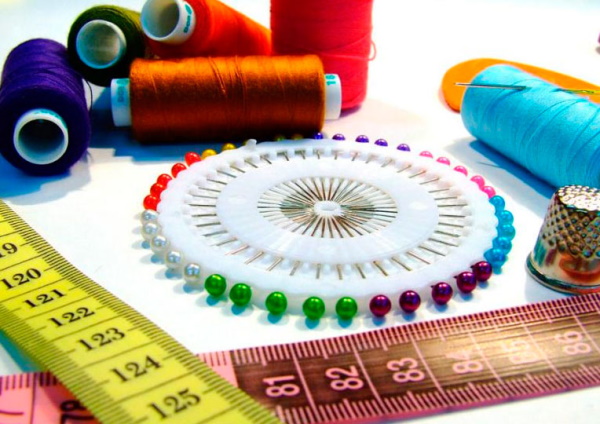
- millimeter paper or tracing paper and rulers;
- pins;
- hidden zipper;
- tailor's chalk, pencil or dry bar of soap;
- sewing machine;
- scissors;
- threads matched to the base material;
- needles.
Taking measurements
The pattern for a pleated waist skirt is based on standard measurements.
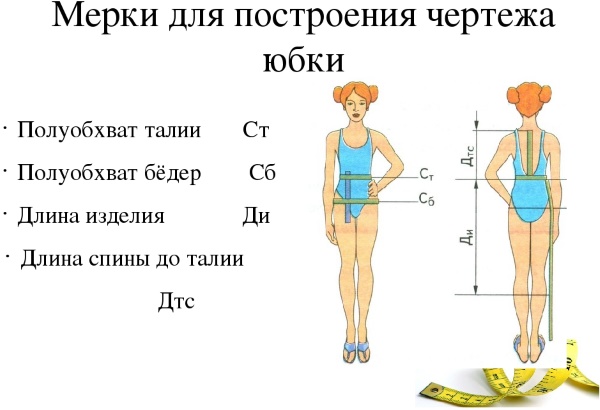
| Name of the measurement | How to shoot |
| Product length (DL) | It is calculated along a line starting from a point on the waist and moving down to the desired end of the model. |
| Back to waist length (LW) | The measurement should start from the 7th cervical vertebra and end at the intersection with the waist. |
| Waist circumference (WC) | The measurement should run along the narrowest part of the figure. |
| Hip circumference (HC) | Measured by the protruding points of the hips. If a woman has a belly, it is also necessary to measure its girth. |
| Hip height (HH) | Measured from the 7th cervical vertebra to the middle of the buttocks. |
| Half hip circumference (PoB) | Corresponds to 1/2 of the hip circumference (HC) value. |
| Half waist circumference (Half waist circumference) | Equal to half of the value corresponding to the waist circumference (WC). |
Types of fold processing
Features of fold design:
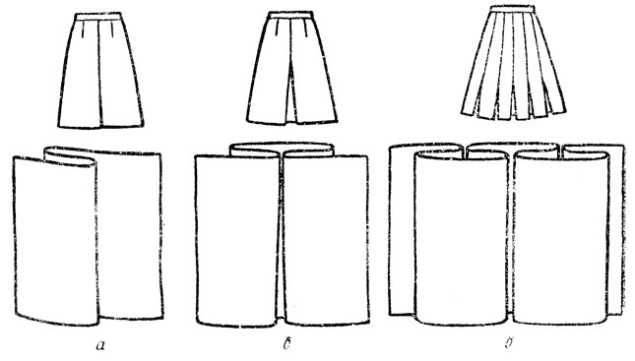
When creating a box pleat, you need to:
- stitch it on the wrong side;
- To obtain a wide surface, iron well.
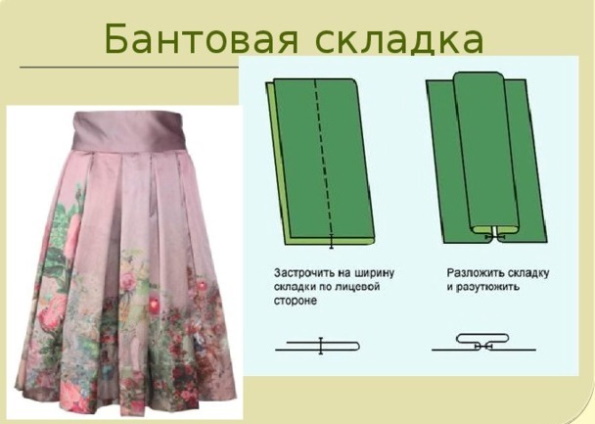
When working with a circular fold:
- it is necessary to shape its depth and then stitch it to fix it;
- Turn the finished decor in the desired direction.
- If necessary, a decorative seam can be sewn on top of the product.
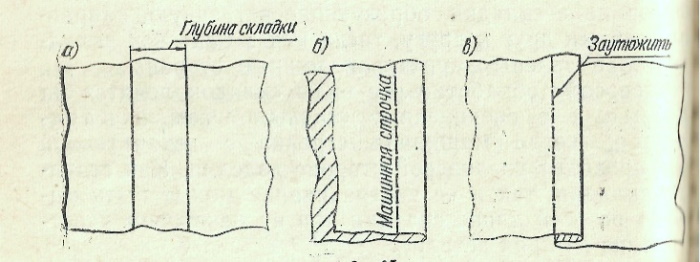
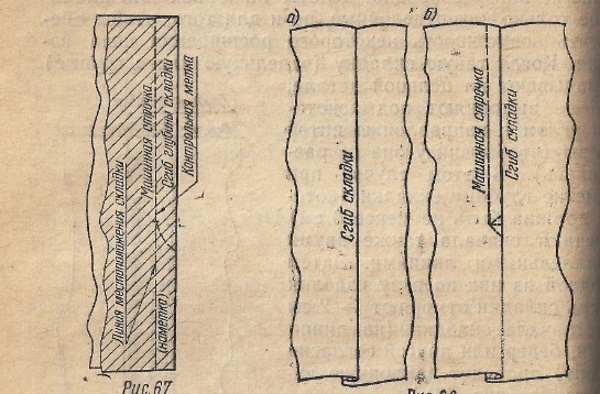
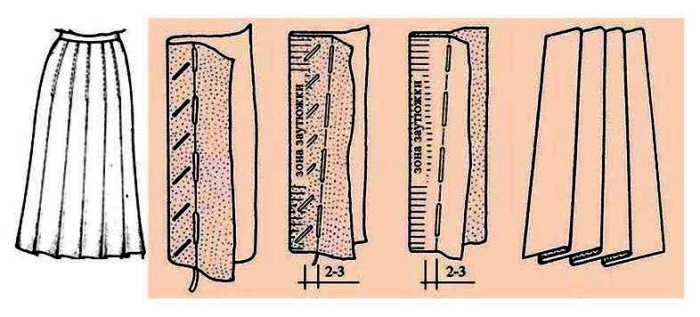
The counter pleats should be placed singly in the center of the skirt:
- are formed with a counter fold;
- To fix them at the selected distance, they are stitched with a blind machine stitch.

A single fan pleat can be formed on any part of the garment, but most often it runs along the center or back seam of the garment.
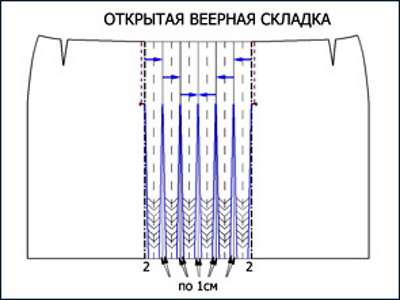
To create it:
- it is necessary to mark the bending surface;
- form and place tucks one on top of the other;
- mirror the decor on the other side of the product;
- To prevent the fabric from thickening, excess material can be removed.
How are folds and the amount of material required calculated?
The depth of the fabric bend is calculated depending on:
- its width (ШС);
- hip circumference (HC) values;
- number of folds (NF).

KS=(OB+Shs)/Shs
Since both halves of the product here have the same shape, the calculation can be made for 1⁄4 of the skirt.
The volume of material required to form folds is determined depending on their number. If the model involves creating double folds, the resulting value should be doubled.
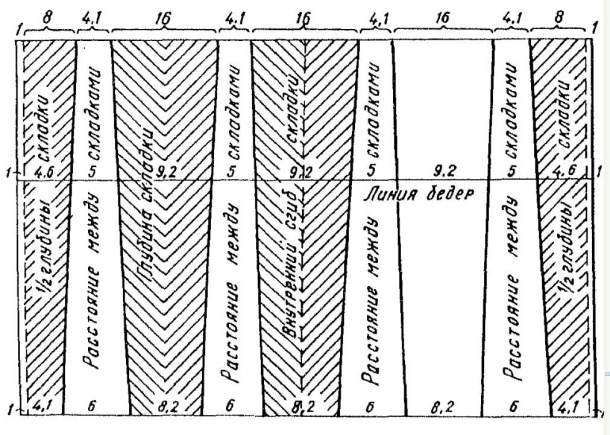
The formula for calculating the required amount of material: (OB * 3) + 10 cm (left for allowance).
If there are a large number of folds, it is permissible to use two pieces of fabric when sewing a skirt.
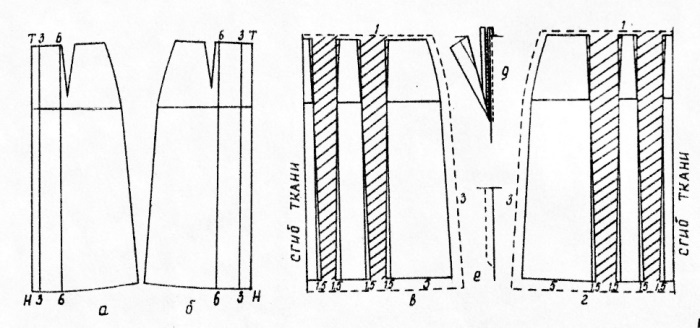
When making the basic pattern of the product, it is necessary:
- take measurements of body parameters;
- decide on the type and number of folds;
- draw fold lines on graph paper.
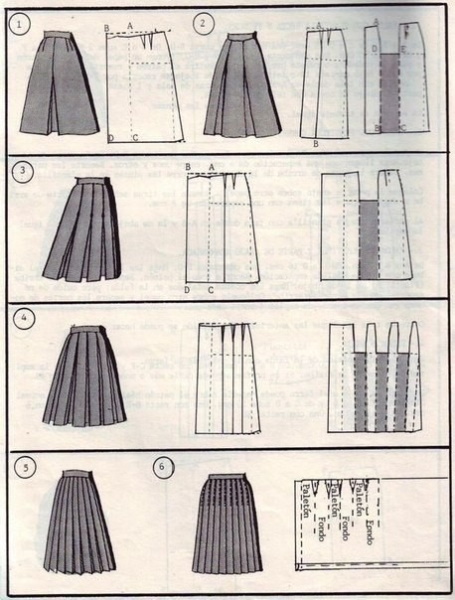
Photo of the cutting above.
Calculation of the depth and width of the fold
A skirt with pleats at the waist (the pattern of the product must be constructed in accordance with the type of fabric tucks) can be made without constructing a pattern by correctly performing the appropriate calculation.
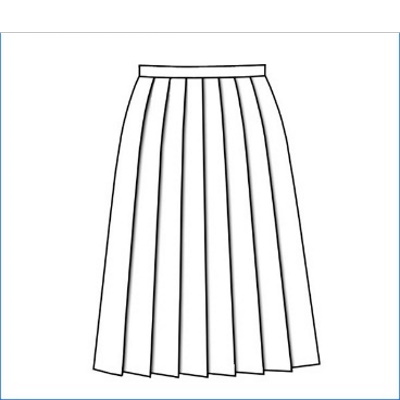
Bends are allowed here:
- shape starting from the waist line;
- create and stitch by directing the fabric folds from the waist to the hips
- form from the waist in different directions
By the width of the fold, experts mean the distance between the lines of adjacent external folds of one-sided folds. The permitted width of the fabric tuck located in the hip area is 4-8 cm, with the optimal being 5-6 cm.
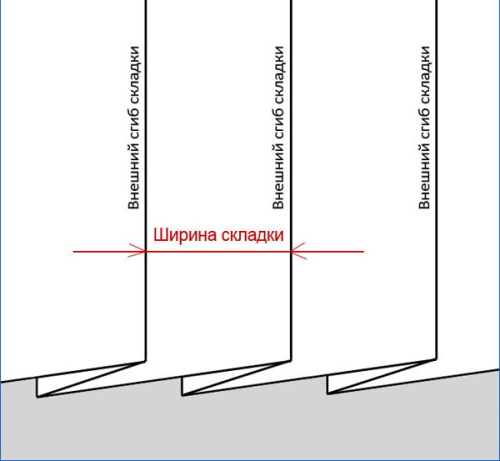
The width of the fold can be varied depending on the size of the decor applied to the material (stripes or cells). The depth of the fold refers to the size of the area inside the bend. The value can vary from 8 to 11 cm.
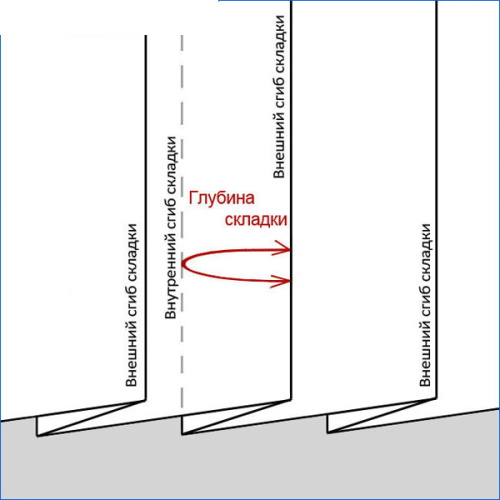
According to the manufacturing method, professionals divide one-sided circular folds into:
- Full - requiring material for their creation 2-3 times greater than their depth.
- Economical - with a depth less than the width of the fabric tuck.
Sewing a skirt with one-sided circular pleats
Calculations to be made before sewing a skirt:
- The total number of folds corresponds to the waist circumference (WC) parameters. Given this rule, the specified measurement must be divided by the desired depth of the bend. So, with a WC of 72 cm and a depth of 5 cm, the model will consist of 14 folds with a 5 cm deepening in each.
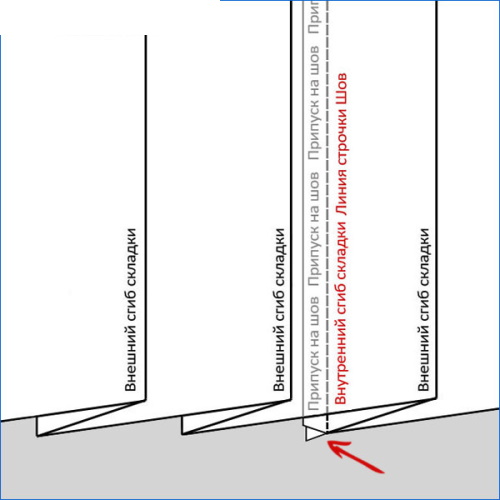
- The calculation of the material required for sewing the product is carried out based on the number of folds increased by their width. When forming circular fabric tucks on the model, the depth of each should be increased by 2 times (in this case, bringing it to 10 cm).
- The result you are looking for here will be 140 cm (14 * 10), which indicates the size of the material required to form the folds.
- To the obtained value, you should add the value corresponding to the waist circumference (72 cm), which will increase the required amount to 212 cm.
- During calculations, it is also necessary to take into account the distance left to create seams: from 1.5-2 cm for each of them and added to the final value (212).
- On the selected material, you need to apply the obtained dimensions of the product on the back side, and also mark the contours of the allowances with a dotted line. Using these lines as a guide, you can cut out the fabric.
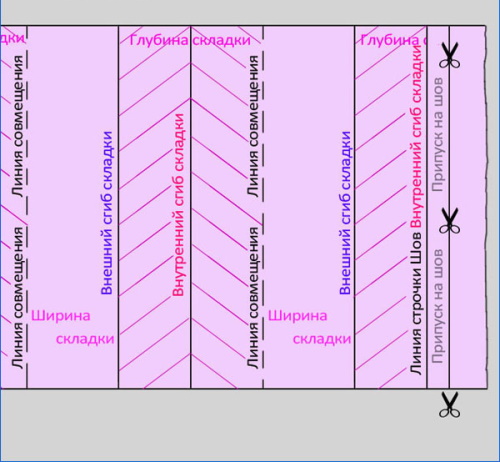
- To mark the folds, you need to use notches that define the beginning, middle and end of the tuck.
- After cutting, you can begin making the product, which requires first joining the skirt panels along the seams, and then, along the existing notches, baste the future folds of the product, simultaneously directing their inner fold, located on the wrong side, to the left.
- The folds are swept as you move from the side seam, and the first bend should coincide with the center line of the fabric tuck and be hidden inside it.
- Similar actions are carried out along the entire length of the fabric flap so that 1/2 of the fold depth can be placed at its end.
- Darts allow you to give the skirt a form that fits the waist, and their depth is calculated using the formula: (OB - Pb) - (OT + Pt). The resulting value should be divided by the total number of folds (14). The found value must be divided by 2, and then used to increase the depth of the folds that pass through the waist area.
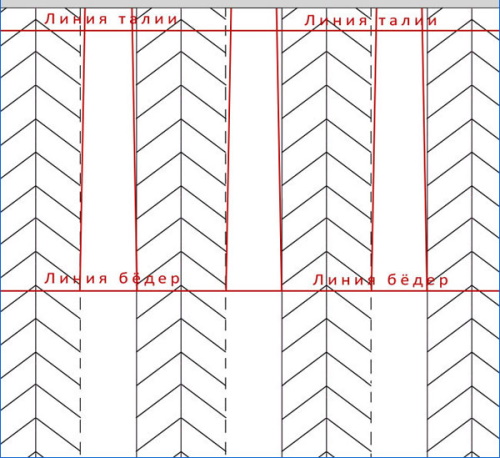
- A straight-cut skirt requires all pleated folds to be fixed with an iron. A flared silhouette with conical pleats requires an increase in the depth of the fabric tucks by 0.5 cm on each side.
- After finishing the formation of the folds, you need to attach the belt to the skirt using a blind stitch. It should be attached on the wrong side, simultaneously connecting it to all parts of the main product. On one side of the belt, you need to sew a button, and on the other, make a loop corresponding to its size. All seam edges are subject to overlock processing.
- The bottom edge of the skirt is hemmed with a circular seam with a 2-4 mm hem.
Skirt with box pleats
A pleated skirt at the waist (the pattern of the main product is always measured depending on its shape) decorated with fabric bow tucks requires a 4-fold increase in the depth of the pleats (from 5 to 20 cm). If there are a large number of them, the allowances for the pleats are also subject to increase.

The box fold is made on the wrong side of the material, and in its production, the precise alignment of the joints along the front and inner folds is of particular importance.
When forming the bow folds of a skirt, the following is applied to the material:
- 1 and 3 - external and internal fold lines;
- 2 - overlay lines;
- 4 - limiting lines of the fold length;
- 5 - direction of bends;
- 6 - lines of the intersecting seam.
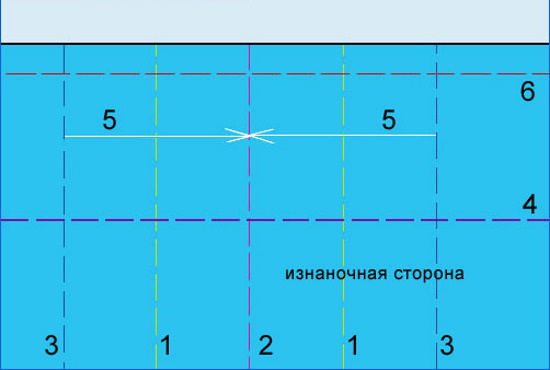
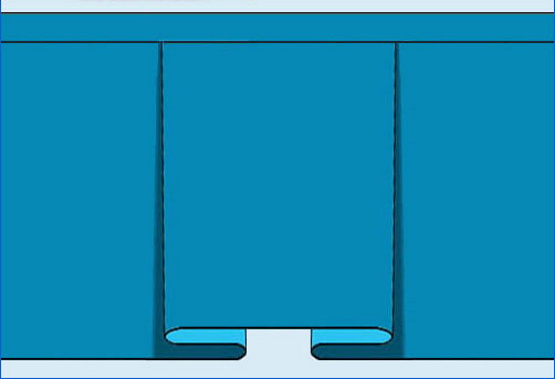
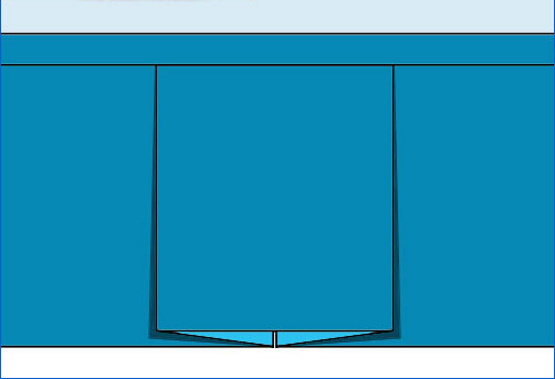
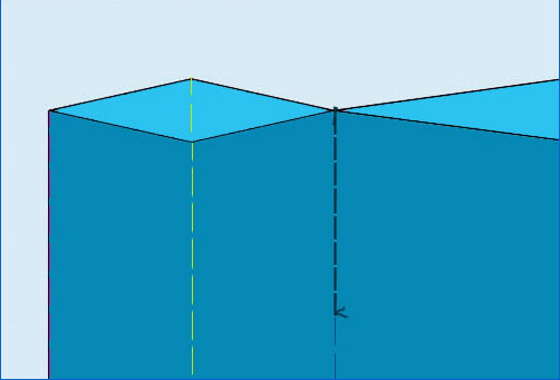
The box pleats are formed strictly along the applied lines, and depending on their shape they can:
- remain soft without requiring the use of an iron;
- be ironed and require bending of the material during formation and subsequent fixation with an iron.
- be done with a piecing stitch running along the inner fold line and extending to the limiting section.
When making such a model:
- You need to cut out the fabric of the garment and the belt. The latter needs to be reinforced with interlining on the inside.
- The tucks in the fabric are formed by moving from the center to the side seam on the product, folded with pins and basted along the top edge of the product.
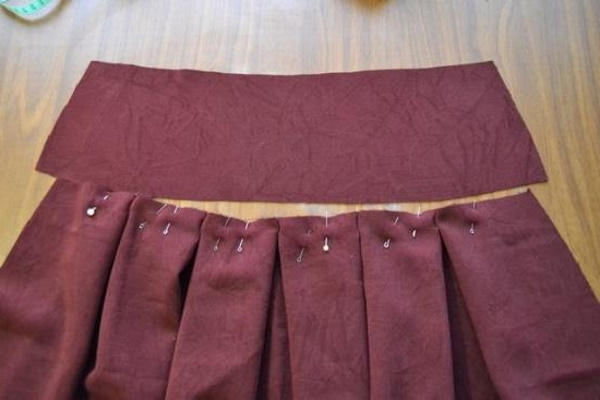 | 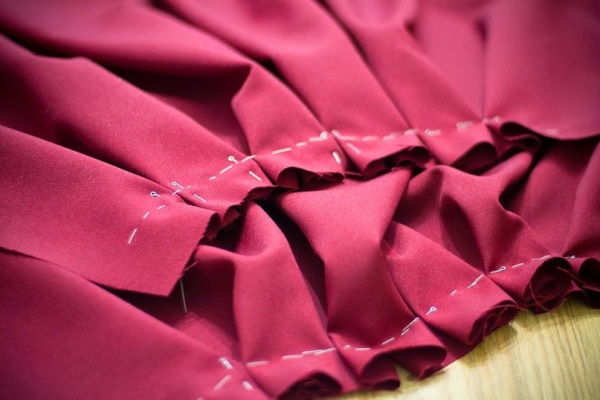 |
 | 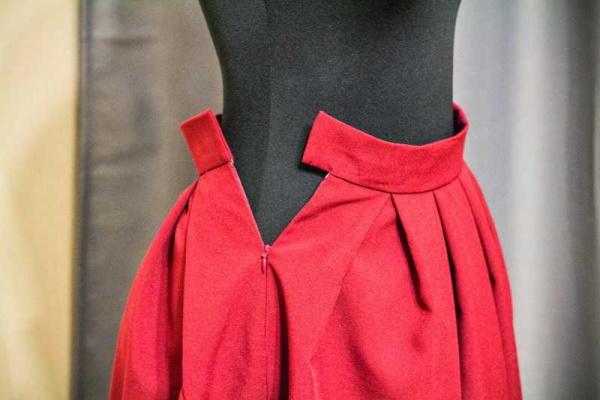 |
- The side seams of the product must be connected, additionally leaving 15-16 cm on one of them, which is necessary for sewing in a zipper.
- The prepared skirt model needs to be tried on, and then the zipper needs to be sewn in, first using basting and then machine stitching.
- A belt needs to be sewn onto the resulting product. A buttonhole needs to be punched at one end, and a button needs to be sewn on the other.
- The finished product needs to be steamed and tried on. The bottom of the model needs to be folded up to the desired length and hemmed. The finished cut should be processed with an overlock.
Skirt with inverted pleats
A skirt with pleats at the waist (the pattern of the model requires a clear definition of the sizes of the tucks on the fabric) decorated with counter folds is made similarly to the previous model.
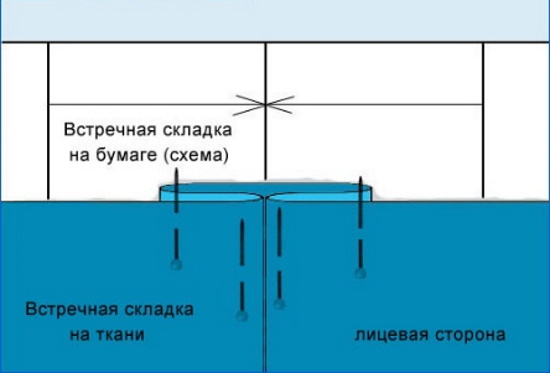
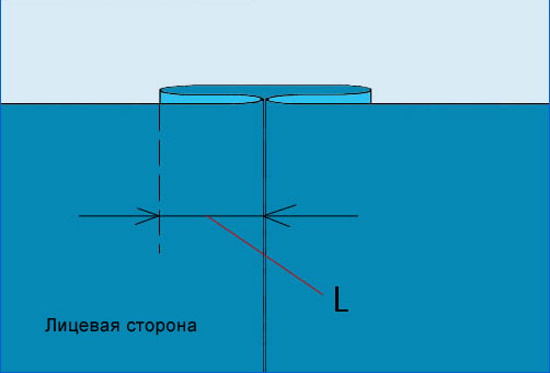
To make a fabric tuck, it is necessary to combine two one-sided folds. The connection line here should pass in the middle of the opposite bend.
The folds placed on the material can be located:
- butt-jointed;
- a group of several tucks;
- one by one.
The counter fold is made with a depth of 4 times the normal circular fold. The material used for the allowance is also increased. Counter folds on a skirt are made similar to one-sided ones, except for their opposite direction.
One-way pleated skirt
A one-sided pleated skirt can be used in a business style.

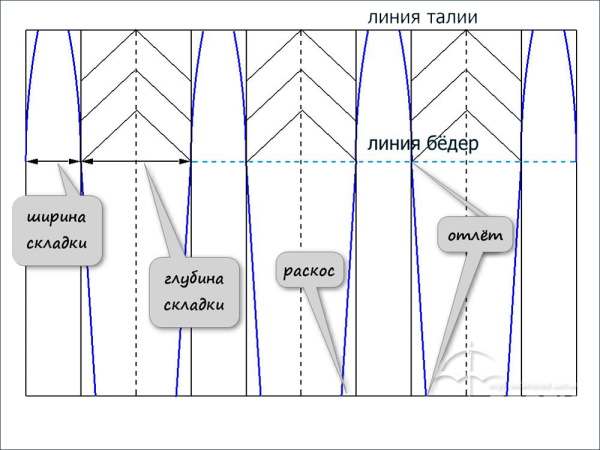
When sewing a model you will need:
- Calculate the required amount of material taking into account the size and number of folds. So for 2 tucks with a depth of 5 cm, you will need to add 20 cm to the waist circumference (WC) parameters.
- This model is made using a straight skirt pattern, on which the division between the folds should be formed using a vertical strip.
- Moving in a straight line, the finished pattern needs to be cut and pinned to the back side of the selected material. From its end, it is necessary to set aside a distance of 20 cm (required for forming folds), and then attach the second part of the pattern to the fabric. The middle of the indicated area should be marked with a line.
- On the cut out fabric, first the darts are sewn, and then the folds are formed, directed from the center of the model to its side seam. The first fold is laid from the beginning to the middle of the marked area. The second should depart from the central line of the first.
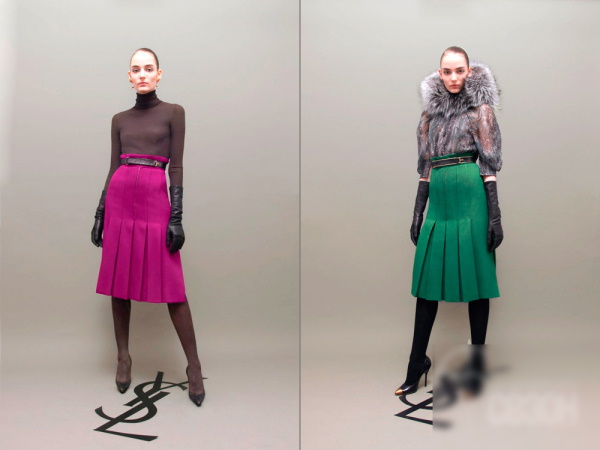
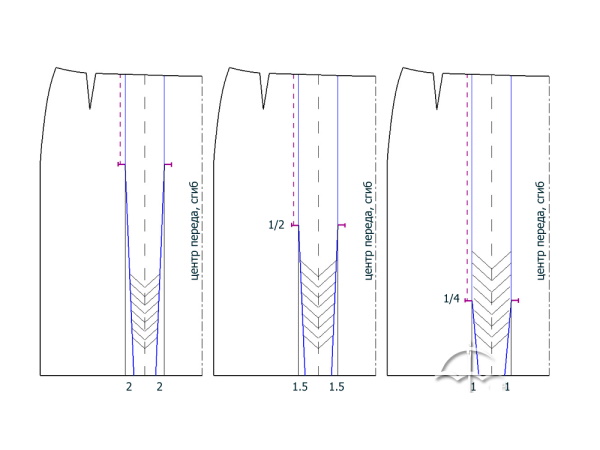
- The product with formed folds needs to be swept along the side seams, tried on, and then machine stitched. A zipper needs to be inserted into one of the side seams, and then a belt needs to be sewn onto the product. The finished skirt needs to be steamed, put on, folded at the bottom to the required length, and hemmed with a blind stitch.
A pleated skirt at the waist is an ultra-fashionable model of women's wardrobe, made from thick or light, flowing fabric.
Not requiring the construction of a pattern, it requires a careful approach to the calculation required to create folds of material, the accuracy of the formation of tucks and their direction, which allows you to create a beautiful and bright outfit without professional skills of women's craftsmanship.
Video about skirts
Skirt with pleated waist:
